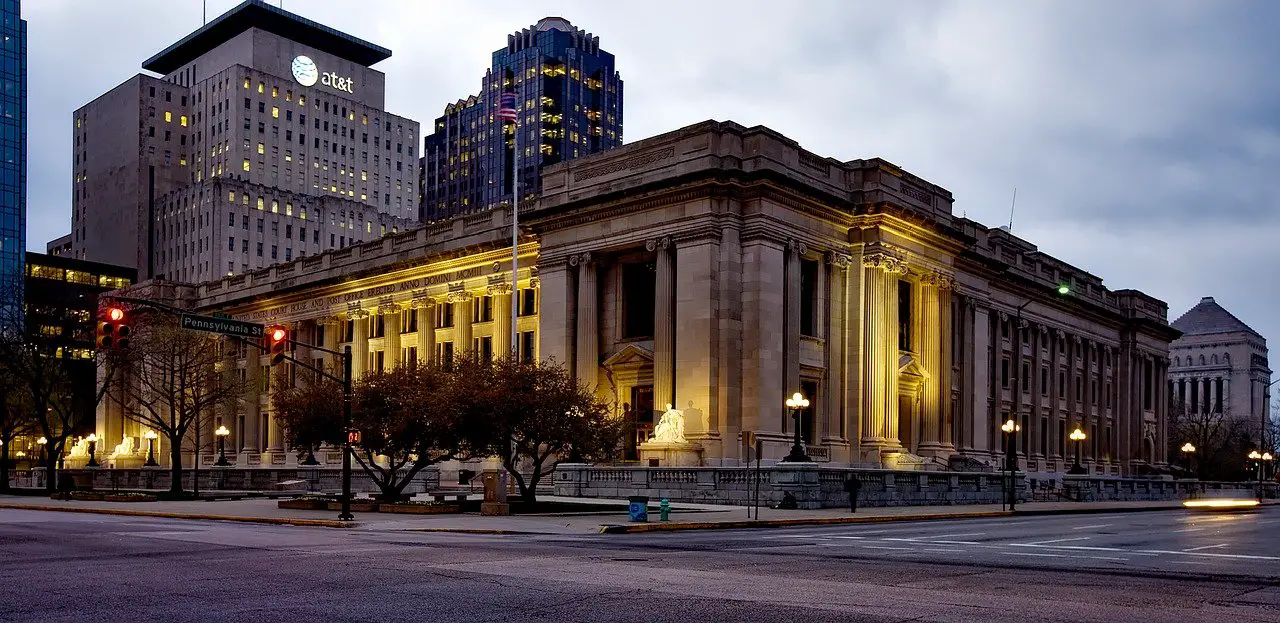Capital of Indiana – Indianapolis, also called Indy, is the 17th most crowded city in the United States. With 368 square miles, it is the 16th largest city by land area in the U.S. Indianapolis and is one of the largest economic regions in the U.S. with vast sectors of finance and insurance, manufacturing, government, business services, education and health care, and wholesale trade.
Indianapolis developed when European immigrants and American settlers resided in the large pieces of the available land. The first inhabitants of the area were Irish and German. With the construction of a highway and a railroad through the city, the city’s economic situation improved, the population grew, and it developed into a logistics center during the American Civil War. Currently, Indianapolis is home to around 850,000 residents and operates as the administrative center of Marion County.
Cultural Significance of Indianapolis
Indianapolis has notable Fortune 500 companies headquartered in the city. Popular for performing arts such as film, dance, and music, the city hosts many festivals every year, such as the Indiana Black Exp, Indiana State Fair, and the Irvington Halloween Festival. It also hosts the world’s greatest one-day sporting event, popularly called the Indianapolis 500, to celebrate the cultural heritage of Indiana. People from across the globe come to witness this spectacular race every year. Indianapolis has a wealth of literature and has hosted several best-selling authors like Kurt Vonnegut, John Green, and Meredith Nicholson.
Timeline of Indianapolis
For almost 200 years, Indianapolis city has been the capital of Indiana. However, from obtaining statehood in 1816 and until 1825, the capital of Indiana was Corydon. It was moved to Indianapolis on January 10, 1825. Jeremiah J. Sullivan proposed to name the state, Indiana, and added the Greek suffix ‘polis’ or city. On January 11, 1820, the Indiana General Assembly nominated Elias Pym Fordham and Alexander Ralston to design a plan for Indianapolis. The state legislature approved the site and the name Indianapolis on January 6, 1821, the actual founding year of Indianapolis. On December 31, 1821, Marion County was established, making Indianapolis a seat of county government. On January 1, 1825, the seat of state government moved to Indianapolis from Corydon, and in the same year, a U.S. district court was established. Effective March 30, 1847, Indianapolis became an integrated city, and Samuel Henderson was Indianapolis’s first mayor to lead the new city government.
History of Indiana’s State Capital
During the year 1800, Indiana was established when the Northwest Territory was separated into two territories, Ohio and Indiana. Initially, Vincennes, a city on West Indiana, bordering Illinois, was chosen as the capital of Indiana. Built in 1805, the capitol building in Vincennes, or the Red House, is still open to the public as part of the Indiana Museum tours.
After thirteen years, due to the threats from Indian attacks, the capital was transferred from Vincennes to Corydon. The second capital of Indiana, Corydon, also housed many government establishments such as the Harrison County courthouse, the Old Treasury Building, and the governor’s mansion. It acted as a critical political center for Indiana until January 10th, 1825, before the capital changed to Indianapolis. Since then, Indianapolis became Indiana’s state capital.
When Indiana obtained statehood, Corydon was a more central location, and hence, Corydon was established as the first official capital of Indiana in 1813. In 1816, Indiana’s constitution was drafted under a huge elm tree, popularly known as the “Constitution Elm.”
Notable Sites in Indianapolis
Indianapolis has the world’s largest children’s museum that is spread across 40,227 square meters of space and displays more than 120,000 artifacts. You can also visit the Indianapolis Motor Speedway Museum, which is a famous site for motorsport fans and displays automotive collection. Home to several monuments such as the Soldiers’ and Sailors’ Monument, the Medal of Honor Memorial, and the Indiana World War Memorial Plaza, Indianapolis is a must-visit city. The 555 acres Crown Hill cemetery located in Indianapolis is the third largest in the country. This is the burial place of Benjamin Harrison, John Dillinger and James Whitcomb Riley. Eagle Creek Park, which has more than 3,900 acres of land and 1,400 acres of water, is one of the largest municipal parks in the U.S.
Indiana State Capitol
Indiana State Capitol is a national treasure and has all the three branches of government functioning out of this building. The capital city was transferred from Corydon to Indianapolis in 1825. The construction of the current statehouse started in 1867 and was finally completed in 1888. Made of Indiana limestone and white oak, this historic building has a magnificent stained German glass dome-shaped window.
Until 1825, Corydon remained the official capital of Indiana before the state capital moved to a more central location. Indianapolis was in the central region of Indiana, and the delegates voted to move the capital there. With the construction of a courthouse in the year 1825 and the National Road in 1827, this city was more connected to the other cities.
Indianapolis continued to prosper with the development of railroads in the mid-1800s, the construction of the Indianapolis Speedway in 1911 and Soldiers’ and Sailors’ Monument in 1905. Since then, the city has grown and developed to become the modern city that it is today.
